Doepfer A-190-5 Handleiding
Doepfer
Niet gecategoriseerd
A-190-5
Bekijk gratis de handleiding van Doepfer A-190-5 (10 pagina’s), behorend tot de categorie Niet gecategoriseerd. Deze gids werd als nuttig beoordeeld door 43 mensen en kreeg gemiddeld 4.9 sterren uit 22 reviews. Heb je een vraag over Doepfer A-190-5 of wil je andere gebruikers van dit product iets vragen? Stel een vraag
Pagina 1/10

Preliminary Manual (Dec.18, 2018)
Module A-190-5 is a four voice Midi/USB to CV/Gate interface.
For each voice a pitch control voltage (CVNote, 1V/octave standard to control VCOs), a gate output (to
control envelope generators) and two additional control voltages (CV2, CV3) are available. The two
additional CV outputs can be controlled by Midi velocity(CV2), (CV3) volume, modulation, all other free
assignable Midi controllers , after touch.
The mode is selected by means of momentary switches and is shown in the LC display.
Certain parameters of each mode can be edited (e.g. the midi channel(s), the midi reference note for
0V CV, assigned controllers for CV3).
The parameter values (e.g. midi channels) are shown in the display and can be modified by means of
the momentary switches.
In Play mode the LEDs of the first four switches display the gate states.
a. Display : 2x16 char.LCD display shows names of modes, functions and parameter names as
well as parameter values.
b.
Return : Opens up a sub function resp. takes you to the next lower level of the menue structure
(down). It also has to be pressed to confirm some functions.
c.
2
2
2
22 Escape : Takes you back to the next higher level of the menue structure (up). It may also be
used to cancel certain functions.
d. < / - : Takes you back to the previous function / parameter on the current menue level
(backwards). It also decreases a parameter value by one step at a time. When pressed down
continously , the value change will be accelerated.
e. > / - : Takes you to the next function / parameter on the current menue level (forward). It
also increases a parameter value by one step at a time. When pressed down
continously the value change will be accelerated.
f. Shift1 Intended for future extensions
g. Shift 2 Intended for future extensions
In- / Outputs:
1. USB port: Input for MIDI data. (USB Class Compliant, no need for a custom driver )
2. MIDI IN : Input for MIDI data (DIN socket)
3. MIDI THRU : Output to loopthrough for most of incomming MIDI data events to another
Matrix of Outputs 4x4
1,2,3,4 on A,B,C,D = 16
In each column 1-4 is one of 4 'Voices' / Voices, each with:
A. Gate : GATE signal outputs
B. CV Note : Outputs for control usually used for controlling VCO pitch.
C. CV 2 : Output for control voltage Velocity.
May be used to control additional parameters just like e.g. VCF cutoff or VCA level

In addition, there are other control voltages in the form of the CV3 output jacks already, which do not
belong directly to the actual voice. These voltages can be controlled independently of the notes /
voices by means of associated further midivents, such as controller, aftertouch.
D. CV3: outputs for assignable controller / monophonic aftertouch
Controls (e.g., VCF, VCA, etc.)
After switching on, the LEDs under the buttons are briefly switched from left to right in a kind of
'running light' on / off, after which the A-190-5 is immediately ready for operation.
It is then in the normal operating mode where all incoming MIDI information is converted to
corresponding CV, gate and CV2 / CV3 according to the set interface parameters.
The gate LEDs (corresponding to the button LEDs 1 - 4 in this mode) will light up when MIDI is active.
The A-190-5 has in addition to readymade allocation algorithms still some changeable and storable
parameters for the conversion of the MIDI information.
To allow easy access to all functions and parameters, the user interface of the A-190-5 is based on a
simple menu structure.
The navigation within the menu structure is carried out with the help of the four buttons and follows a
uniform scheme:
• Use the "</ -" and "> / +" buttons to move forwards and backwards within the current menu level or
from left to right or vice versa.
• In this way you will nd dierent operating mode menus in the upper menu level. As soon as you
have reached the last menu position of a level, you must move back with the help of the "</ -"
button.
• As soon as you have reached the menu or the function you want to edit, press the button
"Return". This opens its parameter level.
• The parameter level shows in the first instance the respective parameter value, consisting of
parameter name and numerical value. This can be recognized by the fact that the parameter name
and value are separated by a ':' colon.
• With the "</ -" and "> / +" keys you can now access all the parameters within the current menu.
Again, once you have reached the last parameter of a function, you can use the "</ -" key move
back.
• Press the button again
"Return" will switch to Edit mode. Now you can change the values of the
selected parameter.
• This is indicated by the now editable value of '> ... <' is enclosed.
• Now use the "</ -" and "> / +" buttons to change the values of the selected parameter. Some
values are represented as numbers, others in the form of abbreviations. Holding down one of these
buttons increases the speed of the value change.
• By means of "</ -" and "> / +" one no longer changes through the parameters, but raises or lowers
the value.
• In edit mode and only there it is partly possible to switch through (repeatedly) by pressing
"Return at a parameter of the same name through the columns / voices". The position within the
column / voice is displayed in the upper right corner (1 line of the display) in '[..]' - square brackets.
• To be able to leave the edit mode again, and only then is that possible, press the 2
2
2
22 "Escape"
button. In general, 2
2
2
22 "Escape is used to exit the current menu / edit level and move to the next
higher level.

Attention: Changing parameter values has a direct effect on the output NoteCVs, Gate and CV2 / CV3
signals.
You can hear the result directly.
Attention: In order to obtain value changes after switching off the A-100 system, these must be saved.
The memory function will be described later in this manual.
Memory function (Store)
If you change the setting for a parameter, it will only be temporary and will be lost after turning off the
A-100 system.
To permanently save your setup, you must perform a store function.
If you have the settings of your
A-190-5 saved, they are present immediately after switching on the A-100 system.
To save the settings of the A-190-5:
As soon as you want to save your settings, use the "</ -" button to move to the memory function.
"(c) Software Version & SubIndex"
"SaveMenu = Enter"
Press Enter -
.
The display shows
"Save-Menu !!!!!!"
"Save = Press '</ -'"
For safety reasons, the actual save process must now be triggered with the "</ -" key, unlike all other
menus.
Caution !! The old memory contents will be irrevocably overwritten
• Press
or 2
2
2
22 or ”>/+“ to cancel the memory function.
• Press "</ -" to permanently save the current settings of all parameters of the A190-5.
For confirmation the display will show
"Save-Menu !!!!!!"
"Save-Done; AnyKey"
"Anykey" should indicate, no matter which of the keys are pressed, you always return to the normal
operating mode.
Product specificaties
| Merk: | Doepfer |
| Categorie: | Niet gecategoriseerd |
| Model: | A-190-5 |
Heb je hulp nodig?
Als je hulp nodig hebt met Doepfer A-190-5 stel dan hieronder een vraag en andere gebruikers zullen je antwoorden
Handleiding Niet gecategoriseerd Doepfer

31 Maart 2024

8 Juli 2023

6 Juli 2023

4 Juli 2023

3 Juli 2023

3 Juli 2023

2 Juli 2023

2 Juli 2023

30 Juni 2023

30 Juni 2023
Handleiding Niet gecategoriseerd
- MyAVR
- Corel
- Fannova
- Byron
- IDIS
- Ambient Weather
- Vanish
- Prime3
- Tripp
- Alula
- Vitammy
- Sonicware
- Earbreeze
- Vestil
- Sweex
Nieuwste handleidingen voor Niet gecategoriseerd
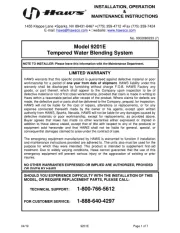
16 September 2025
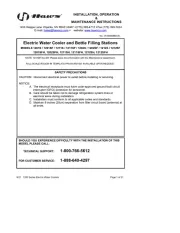
16 September 2025
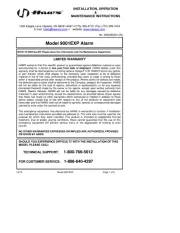
16 September 2025

16 September 2025
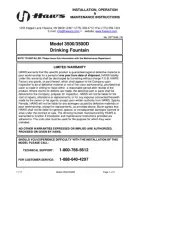
16 September 2025
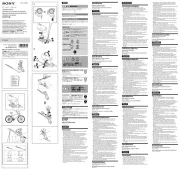
16 September 2025
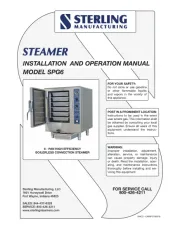
16 September 2025
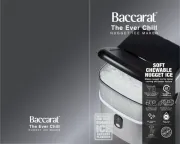
16 September 2025
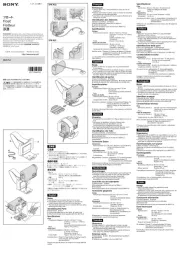
16 September 2025
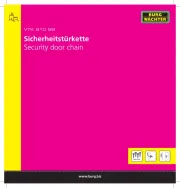
16 September 2025